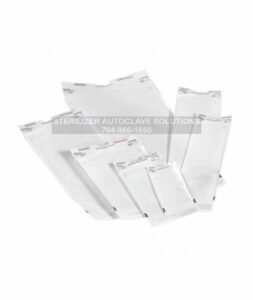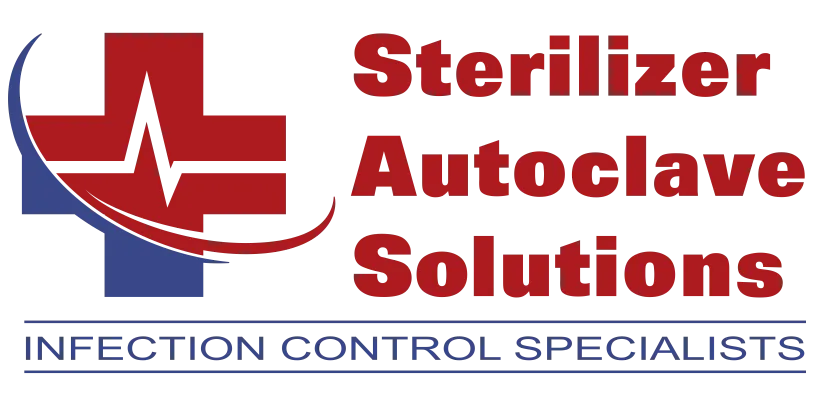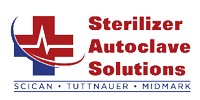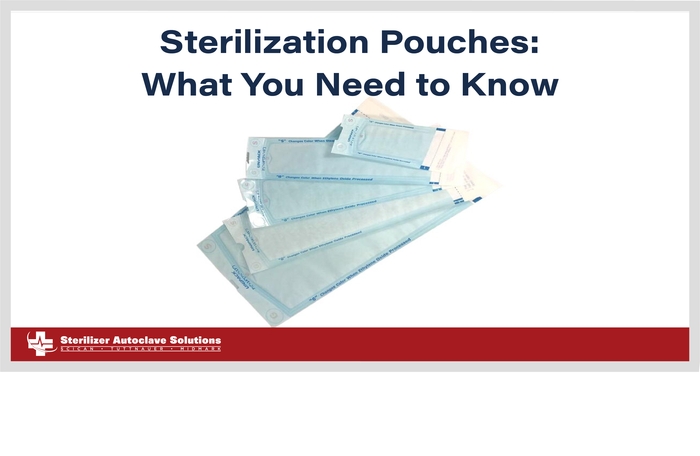Sterilization Pouches: What You Need to Know
The sterilization cycle is a very intricate process. Every step is to ensure that every tool is completely sterile from start to finish. If you look, there are many examples that show this. The autoclave…a sealed, pressurized chamber made to filter a sterile environment, keeping anything harmful out and kill anything that can potentially be harmful inside. The sterilization wrapping…the barrier that maintains sterility after the instruments are sterilized. And today’s topic…the sterilization pouch…the packaging that your tools are placed in for decontamination.
Every element used in the process is vital for proper sterilization, but some may not be familiar with the more intricate details. In this article, we’d like to go into more detail on the sterilization pouch for some that don’t know how they work specifically, or that maybe don’t fully understand the importance of knowing which kind is right for your needs. Like any tool or asset that you use in your practice, you never just pick one off the shelf at first glance. Your needs will vary, so you need the right product to fit said needs the best. The sterilization pouch is no different. Let’s talk more about what these pouches are, how they work, and what you need to know when buying for yourself.
What Are Sterilization Pouches?
This question is easy to answer, seeing as the name says it all. Firstly, let’s go over just what these things are. Sterilization pouches are single-use containment packages for your reusable medical instruments. They are designed for single use to prevent any form of contamination during the sterilization process. These pouches are vital to the process since all equipment used within a sterile area needs to be sterilized. If you sterilize your instruments at your practice, then these pouches will ensure that the sterilization process and storage process are contamination-free. If you send your instruments to be sterilized by a facility, these sterilization pouches also ensure a sterile transportation for reprocessed instruments from the facility to you… which is extremely important.
So know that we know what they are, how do you properly use them?
How the Pouches Are Used
The good thing about the use of sterilization pouches is that they’re relatively easy to use. When you’re trying to reprocess your instruments on time, the last thing you need is a hassle.
Before the instruments are packed, they’re decontaminated, cleaned of any visible debris, and dried. Then it’s time to place them in the pouch and space them accordingly. Spacing is important for proper steam penetration on each and every instrument. Now that the instruments are added, usually a chemical indicator is added in as well.
Chemical indicators are used to monitor the parameters of a sterilization process, to ensure that the process has been carried out properly. One type of chemical indicator uses a chemical reaction to bring about a change in the indicator’s color. The chemical present in the indicator ink reacts with one or more critical parameters of the sterilization process and changes color accordingly. This way you can easily tell if your sterilizer is functioning as it should.
Once the indicator is added, the pouch gets sealed. Some pouches have self-sealing capabilities, and others require heat-sealing. **Always be sure to follow the manufacturers instructions on proper handling of the pouch.** After it’s sealed, it’s time to put the pouch into the sterilizer properly. Once the sterilization cycle is complete, store your pouches according to proper storage guidelines until they’re needed for use. Simple as that. What may not seem simple, however, is figuring out how to find a pouch that works for you. Thankfully, that’s what we’re here for, so let’s see what it is you need to look for.
How to Make the Right Choice
Like anything else when it comes to looking for tools that benefit your practice, you need to know what to look for. Even down to the simplest things like gloves, or in this case, sterilization pouches. So here, we’ll go over the key things to look for when looking into purchasing sterilization pouches for your practice.
Efficiency
This has to do with the different types of sterilization pouches, namely pre-sized or cut-to-size pouches. When a facility is large or busy, pre-sized pouches can be beneficial for cutting down on time spent cutting to size. If a facility is limited on space, then cut-to-size rolls may offer more versatility by having the ability to be used with multiple instrument types.
Self-Seal vs Heat Seal
For self-seal pouches, training for the frontline technician will be required. A proper seal means no gaps are present in the seal. Similarly, heat-seal pouches must be done precisely to ensure a smooth and complete seal. There are tools available that can evaluate the quality of the seal, such as tape or dye, to help ensure its efficacy and validate the sealing process.
Pouch Size
Size is an important factor when looking into these pouches. You need to evaluate based on your facility’s storage capabilities. It’s recommended that you take measurements and see what size pouch will best benefit your practice based on that.
Shelf Life/Sterility
Consider whether the pouch has a shelf life–in other words, does the instructions for use support event-related sterility? Or will unused instruments need to be reprocessed after some time? This may be referred to as event-related or expiration dating. If a sterilized pouch offers limited sterility, it will be important to develop a procedure for sterile processing staff to audit and inspect when pouches are due for reprocessing. These procedures should be developed and followed by your facility.
Utilization Cost
Product costs may vary depending on the type of pouch and size. Larger pouches typically cost more. However, if you choose to use heat sealers, then there will be an additional expense associated with purchasing and maintaining one. So you’ll need to calculate based on your company’s use of the pouches, which one can benefit you the most through cost effectiveness.
Material Durability
It is important to understand how durable the pouch material is, as well as its ability to withstand tearing from storage and handling. Regardless of the shelf life of the sterilized pouches, end users should inspect the package integrity before use. Ensuring that there are no holes or gaps in the seals or breaches will ensure safe patient use.
Sterility Reliability
Sterilization pouches are designed to maintain absolute sterility of the instruments they contain, so it is important to ensure that the sterility is reliable. Some pouches have an external indicator for added reassurance in the operating room.
Ease of Opening
The ability to open a sterilized pouch aseptically is critical. If the pouch does not open as intended or easily, then it could compromise the instrument through unintended cross contamination.
Final Thoughts
Like anything used in your practice, sterilization pouches play a very important role in how you operate. From reprocessing to reuse, these pouches provide a layer of security and sterility unmatched by anything else. Without them, your instruments may be more susceptible to damage or contamination during the process. For both you and your patients, ensuring that your instruments are free of contamination is paramount. Which is why, knowing how they work, how to use them, and knowing how to find the ones that best suit your practice are vital to the process.
And if you have any questions about this or anything else, please give us a call. At 704-966-1650, option 3 for our free tech support. Or you can find us using the links below.
As always if you have any questions about this process or anything else please feel free to contact us and take advantage of our “FREE TECH SUPPORT.”
We also offer FREE VIRTUAL TECH SUPPORT to “See and Talk” with a “Real Time Live Technician” for any problems you may be in need of help with.
You can also use our “FREE MAINTENANCE PROGRAM”. Take the guesswork and worrying about what unit is due for maintenance and which maintenance cycle it is time for. We will keep track of all your autoclaves and let you know when it’s time for anything.


